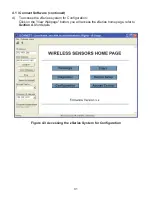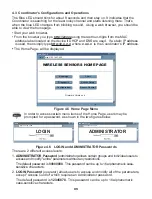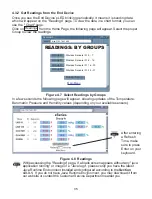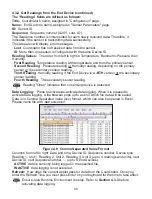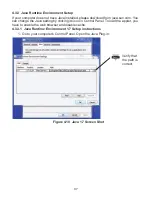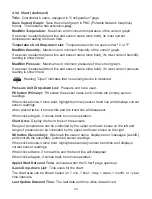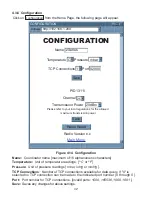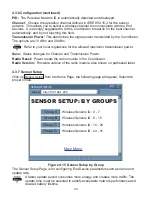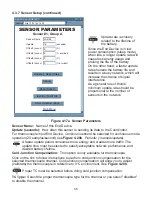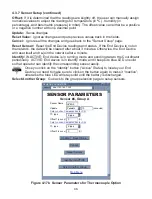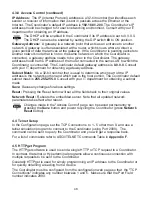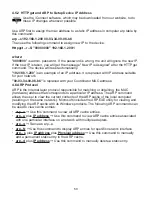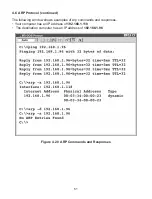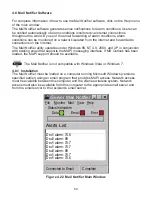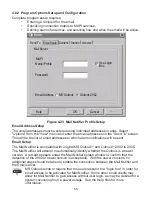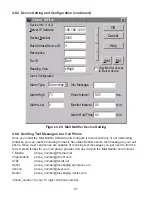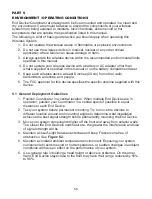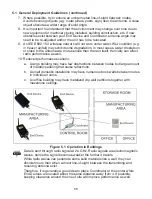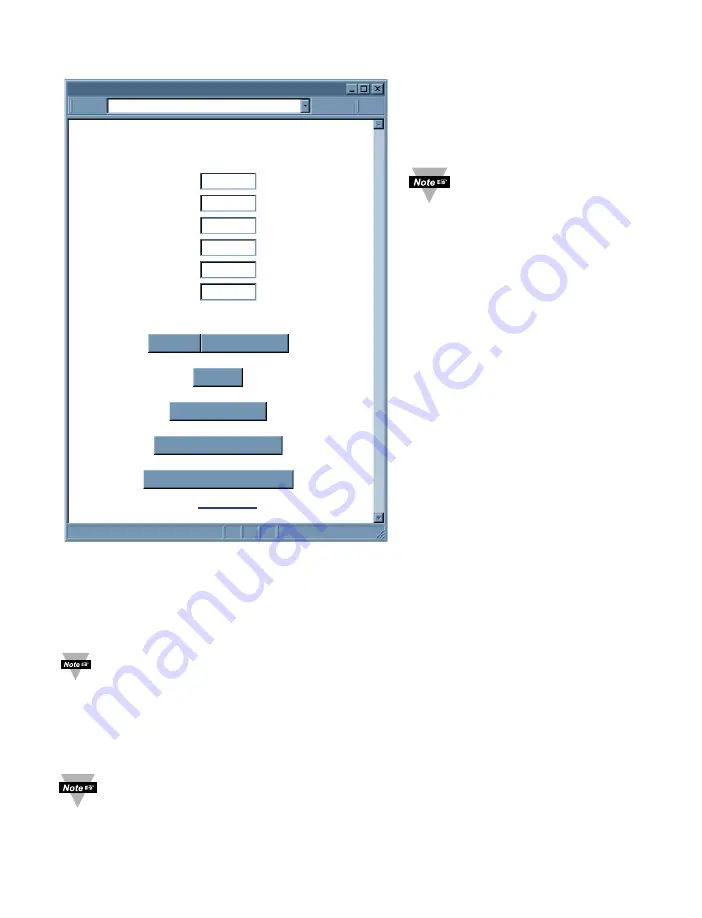
4.3.7 Sensor Setup (continued)
Figure 4.17a Sensor Parameters
Sensor Name:
Name of this End Device.
Update (seconds):
How often this sensor is sending its data to the Coordinator.
For thermocouple input End Device,
Continuous
should be selected for continuous mode
operation (20 samples/second) see
Figure 4.20b
.
Periodic
(1 sample/update).
A faster update period consumes more energy and creates more traffic. The
update time must be selected to satisfy acceptable network performance and
desired battery lifetime.
Cold Junction Compensation:
This option is only available for thermocouple.
Click on the link to follow instructions to perform cold junction compensation for the
selected thermocouple channel. Cold junction compensation will allow you to adjust
(calibrate) the thermocouple in reference to 0°C environment. See
Figure 4.20b
.
Proper TC must be selected before doing cold junction compensation.
TC Type:
Select the proper thermocouple type for the channel or you select "disabled"
to disable the channel.
SENSOR PARAMETERS
Sensor #1, Group A
SENSOR PARAMETERS
http://192.168.1.200
Address
Main Menu
Sensor Name
LAB 50
Select Another Group
Identify: INACTIVE
Reset Sensor
Cancel
Update
10
Update
Reset Value
(seconds)
Offset1 (xxxx.x) 0
Offset2 (xxxx.x) 0
(% or mbar)
Offset3 (xxxx.x) 0
Offset4 (xxxx.x) 0
(% or mbar)
(C)
(C)
45
Update rate is closely
related to the lifetime of
the battery.
Since the End Device is in low
power consumption (sleep mode)
when idle, a longer update rate will
cause less energy usage and
prolong the life of the battery.
On the other hand, a faster update
rate shortens the battery life and
results in a busy network, which will
increase the chance of signal
interference.
As a general rule of thumb,
minimum update rate should be
proportional to the number of
sensors in the network.

